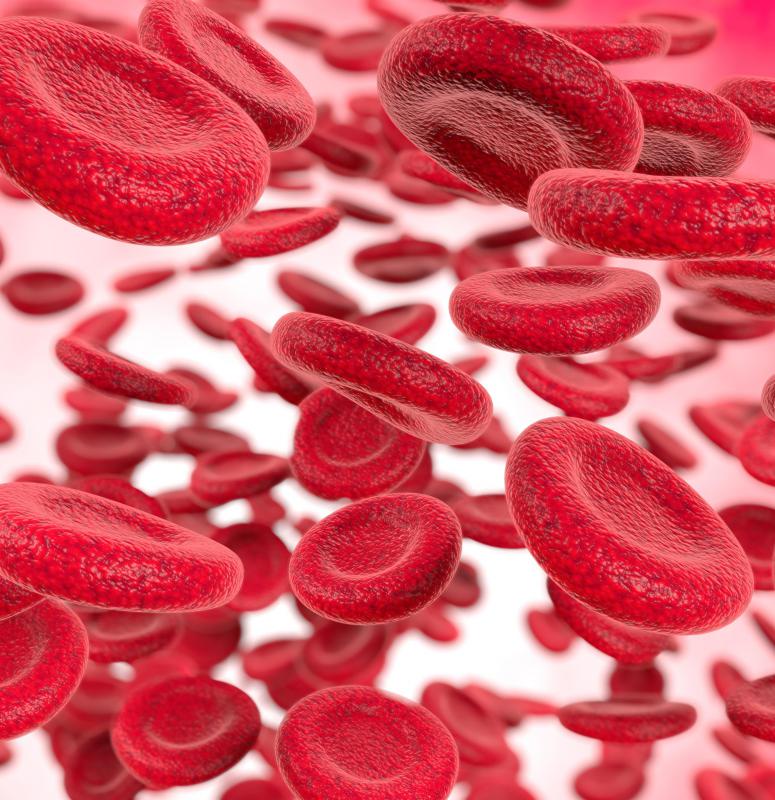At TheHealthBoard, we're committed to delivering accurate, trustworthy information. Our expert-authored content is rigorously fact-checked and sourced from credible authorities. Discover how we uphold the highest standards in providing you with reliable knowledge.
What is a Complete Blood Count?
A complete blood count (CBC), is a blood test that doctors may use to diagnose certain medical conditions, track the progression of an illness, or determine infection. CBCs measure the different molecules that make up blood and compare them to a scale of normal values for each molecule. The test is performed either in a doctor's office, lab, or hospital and requires a blood sample, often drawn from the arm using a needle. The blood draw itself takes very little time, but the results may take several days depending upon the laboratory used to conduct the analysis.
Blood is made up of three kinds of cells: red blood cells, white blood cells, and platelets. A CBC counts the quantity of each of these types of cells. A machine uses light detectors to analyze a small blood sample and count the number of cells. The cell types are determined by analyzing cell structure, components, and size.

A complete blood count generally analyzes all the components of the blood contained in the red and white cells and the platelets. A white cell count will not only include a total number of white cells but will also look at the different kinds of white cells, which can be broken into five subsets. Neutrophils are the infection fighting white cells and should constitute about half of a white cell count. Low levels of neutrophils may make people more susceptible to infections and may indicate the presence of autoimmune disease. Other types of white blood cells are lymphocytes, basophils, moncytes, and eosinophils.

In a complete blood count, lymphocyte levels may be higher in certain types of infections, including viral infections, or it may indicate leukemia. Monocytes are usually evaluated when a bacterial infection is suspected. Increased eosinophils may indicate a parasitic infection.
Red blood cells are counted and evaluated for their hemoglobin (HGB) value, which carries oxygen from the lungs to the rest of the body. A lower than normal level of hemoglobin may indicate anemia, which can be caused by low iron levels in the blood or by other illnesses. Hematocrit (HCV) is measured as a percentage in relationship to total blood volume and is evaluated in a complete blood count to determine internal bleeding from, for example, traumatic injury during an accident or suspected ectopic pregnancy. HCV levels are routinely checked after surgeries that have resulted in blood loss.

Platelets are evaluated in terms of size and number. Low counts of platelets, called thrombocytenia, can cause excessive bleeding when cut, bruising, and heavier menstrual periods. High counts, called thrombocytosis, indicate a higher risk of stroke due to the formation of blood counts. Taking anti-coagulants often reduces platelet volume, and physicians frequently order a complete blood count to make sure platelet numbers are reducing without becoming dangerously low.
A complete blood count is compared against a normal range. This range is different in children, and there is some degree of difference between the counts of men and women. Corresponding normal ranges are often displayed on CBC reports.

Both the lab and a physician will analyze the complete blood count for anything significantly outside of the range. In fact, patients may not actually see the CBC lab report. However, patients can request to see the report and ask their physicians to explain any anomalies.
AS FEATURED ON:
AS FEATURED ON:
















Discussion Comments
I have a complete blood count test done once a year as part of my annual physical exam. My doctor uses these complete blood count values from year to year to compare with the previous years values.
A CBC can really give your doctor a good picture of what is happening inside your body. If you are having problems or complaints, a CBC is often one of the first things a doctor looks at to see what is going on and where further testing needs to be done.
what is a normal red cell count. Is 26 low or anemic?
If you have a low white blood count because of Chemo and your treatment is suspended is there anything you can do to help get your blood count back up?
Post your comments